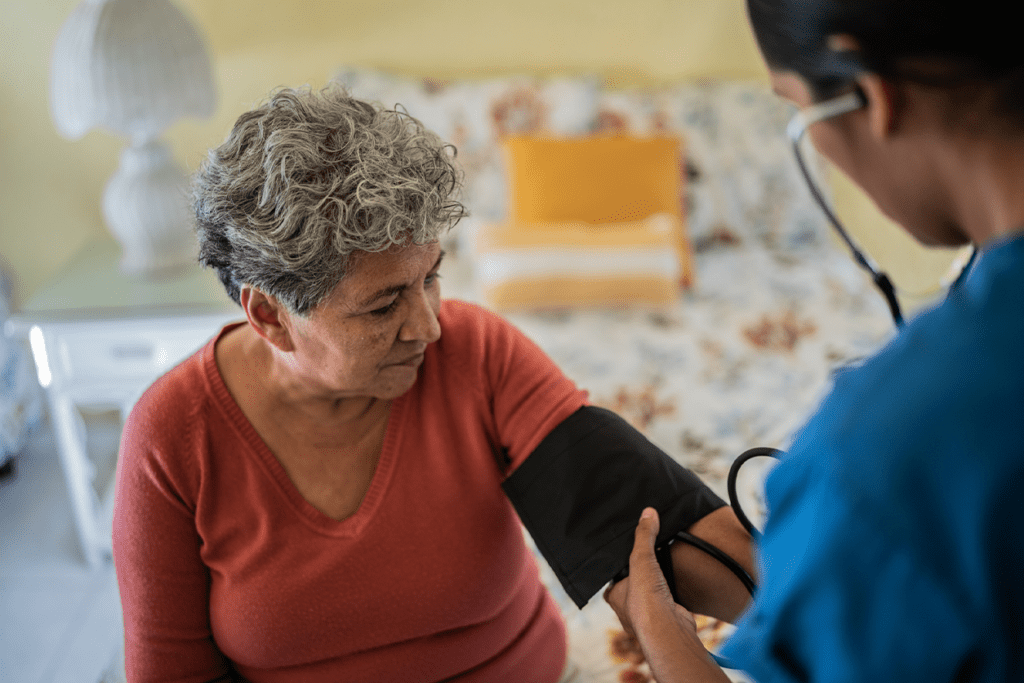
Hypertension is common but regular blood pressure screening can help people avoid its short- and long-term health effects.
High blood pressure, or hypertension as doctors call it, is an incredibly common health condition. About half of all adults in the United States have high blood pressure, which works out to nearly 120 million people. Of these, only one in four have their blood pressure in control.
Hypertension is usually diagnosed by measuring blood pressure with an arm cuff known as a sphygmomanometer at annual checkups and other appointments. Your blood pressure is reported as two distinct numbers: the higher number is called systolic blood pressure and the lower number is called diastolic blood pressure. The American Heart Association labels blood pressures under 120/80 mm Hg as normal. Systolic blood pressures of 120-129 mm Hg with diastolic blood pressures less than 80 indicate an elevated blood pressure. Any reading higher than 130/80 mm Hg is considered to be hypertension with higher numbers indicating greater risks.
Short- and long-term risks
High blood pressure poses both short-term and long-term risks for patients. In the short term, blood pressures that are extremely high (180/120 mm Hg or more) lead to a condition called a hypertensive crisis. A hypertensive crisis can be of two types: hypertensive urgency and hypertensive emergency. What distinguishes the latter from the former is the presence of damage to various organs from the severely elevated blood pressure. This is indicated by symptoms like shortness of breath, chest pain, vision changes, dizziness, confusion, or signs of a stroke. These conditions can be acutely life threatening and can also lead to permanent disability through vision loss, strokes, or heart attacks.
Conversely, the long-term risks from untreated hypertension are even more common. These include gradual damage to blood vessels leading to heart attacks, strokes, chronic kidney disease (including need for dialysis) and peripheral arterial disease. It can also greatly increase risk of vision loss through damage to the retina.
Better health through screening and awareness
Fortunately, individuals can address these risks by identifying hypertension early and bringing down your blood pressure through a combination of lifestyle changes and medications. Identifying those with hypertension is a key challenge. It requires public health programs that are clear on messaging and find innovative ways to get more people screened and aware of their status.
To support this need, Primary.Health collaborates with communities, public health organizations, and other large groups that conduct health screenings by providing program administration software and telehealth follow-up for patients whose screen for high blood pressure and other health issues.
Disclaimer: This blog content and linked materials are not intended as individual medical advice, diagnosis or treatment, and should not be considered as such. Any readers with medical concerns should contact a licensed healthcare provider. This blog is provided for informational purposes only.
